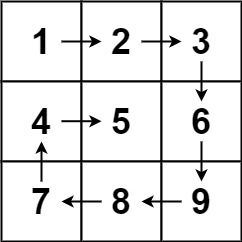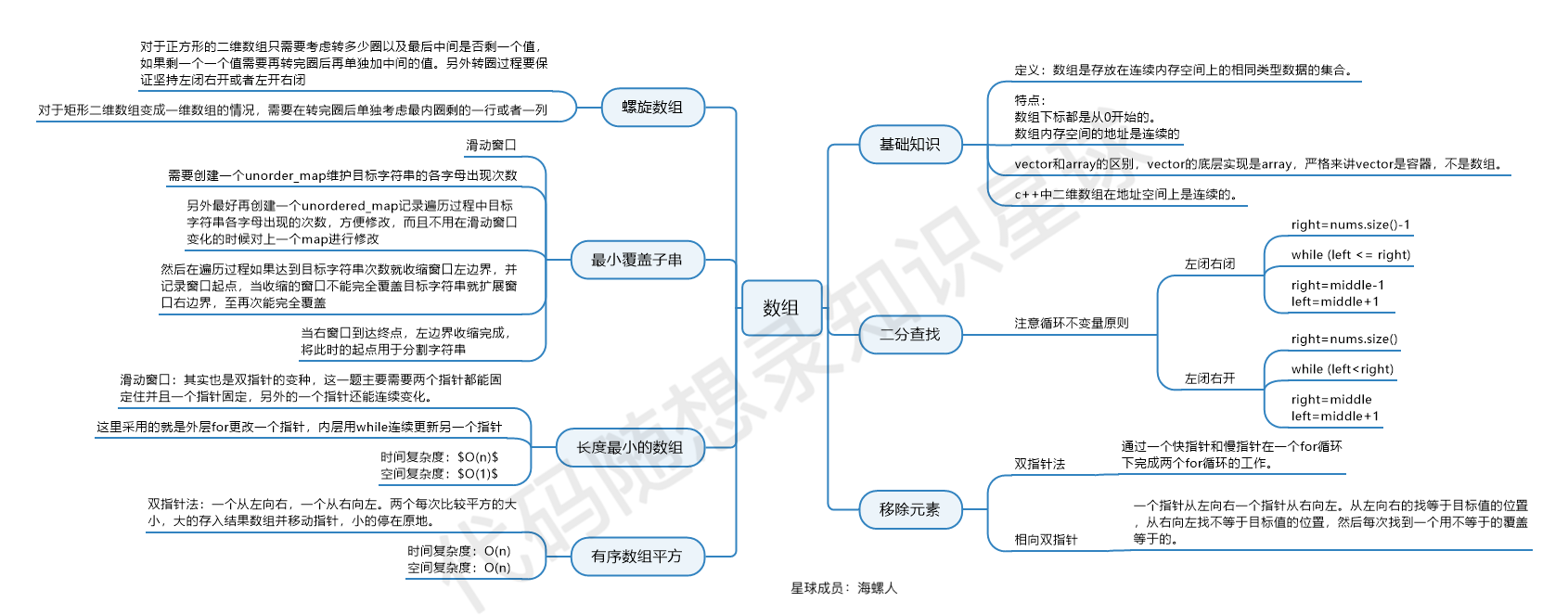数组
查找
二分查找
C
1
2
3
4
5
6
7
8
9
10
11
12
13
14
15
16
17
18
19
20
21
22
23
24
25
|
int search(int* nums, int numsSize, int target){
int left = 0;
int right = numsSize-1;
int middle = 0;
while(left<=right) {
middle = (left+right)/2;
if(nums[middle] > target) {
right = middle-1;
}
else if(nums[middle] < target) {
left = middle+1;
}
else if(nums[middle] == target){
return middle;
}
}
return -1;
}
|
1
2
3
4
5
6
7
8
9
10
11
12
13
14
15
16
17
18
19
20
21
|
int search(int* nums, int numsSize, int target){
int length = numsSize;
int left = 0;
int right = length;
int middle = 0;
while(left < right){
int middle = left + (right - left) / 2;
if(nums[middle] < target){
left = middle + 1;
}else if(nums[middle] > target){
right = middle ;
}else{
return middle;
}
}
return -1;
}
|
JAVA
1
2
3
4
5
6
7
8
9
10
11
12
13
14
15
16
17
18
19
| class Solution {
public int search(int[] nums, int target) {
if (target < nums[0] || target > nums[nums.length - 1]) {
return -1;
}
int left = 0, right = nums.length - 1;
while (left <= right) {
int mid = left + ((right - left) >> 1);
if (nums[mid] == target)
return mid;
else if (nums[mid] < target)
left = mid + 1;
else if (nums[mid] > target)
right = mid - 1;
}
return -1;
}
}
|
1
2
3
4
5
6
7
8
9
10
11
12
13
14
15
| class Solution {
public int search(int[] nums, int target) {
int left = 0, right = nums.length;
while (left < right) {
int mid = left + ((right - left) >> 1);
if (nums[mid] == target)
return mid;
else if (nums[mid] < target)
left = mid + 1;
else if (nums[mid] > target)
right = mid;
}
return -1;
}
}
|
python
1
2
3
4
5
6
7
8
9
10
11
12
13
14
| class Solution:
def search(self, nums: List[int], target: int) -> int:
left, right = 0, len(nums) - 1
while left <= right:
middle = left + (right - left) // 2
if nums[middle] > target:
right = middle - 1
elif nums[middle] < target:
left = middle + 1
else:
return middle
return -1
|
1
2
3
4
5
6
7
8
9
10
11
12
13
14
| class Solution:
def search(self, nums: List[int], target: int) -> int:
left, right = 0, len(nums)
while left < right:
middle = left + (right - left) // 2
if nums[middle] > target:
right = middle
elif nums[middle] < target:
left = middle + 1
else:
return middle
return -1
|
移除元素
暴力方法
JAVA
双指针法
JAVA
1
2
3
4
5
6
7
8
9
10
11
12
13
14
15
|
class Solution {
public int removeElement(int[] nums, int val) {
int slowIndex = 0;
for (int fastIndex = 0; fastIndex < nums.length; fastIndex++) {
if (nums[fastIndex] != val) {
nums[slowIndex] = nums[fastIndex];
slowIndex++;
}
}
return slowIndex;
}
}
|
1
2
3
4
5
6
7
8
9
10
11
12
13
14
15
16
17
18
19
20
|
class Solution {
public int removeElement(int[] nums, int val) {
int left = 0;
int right = nums.length - 1;
while(right >= 0 && nums[right] == val) right--;
while(left <= right) {
if(nums[left] == val) {
nums[left] = nums[right];
right--;
}
left++;
while(right >= 0 && nums[right] == val) right--;
}
return left;
}
}
|
长度最小的子数组
暴力方法
滑动窗口
1
2
3
4
5
6
7
8
9
10
11
12
13
14
15
16
17
| class Solution {
public int minSubArrayLen(int s, int[] nums) {
int left = 0;
int sum = 0;
int result = Integer.MAX_VALUE;
for (int right = 0; right < nums.length; right++) {
sum += nums[right];
while (sum >= s) {
result = Math.min(result, right - left + 1);
sum -= nums[left++];
}
}
return result == Integer.MAX_VALUE ? 0 : result;
}
}
|
相关题目
904 水果成篮
你正在探访一家农场,农场从左到右种植了一排果树。这些树用一个整数数组 fruits 表示,其中 fruits[i] 是第 i 棵树上的水果 种类 。
你想要尽可能多地收集水果。然而,农场的主人设定了一些严格的规矩,你必须按照要求采摘水果:
- 你只有 两个 篮子,并且每个篮子只能装 单一类型 的水果。每个篮子能够装的水果总量没有限制。
- 你可以选择任意一棵树开始采摘,你必须从 每棵 树(包括开始采摘的树)上 恰好摘一个水果 。采摘的水果应当符合篮子中的水果类型。每采摘一次,你将会向右移动到下一棵树,并继续采摘。
- 一旦你走到某棵树前,但水果不符合篮子的水果类型,那么就必须停止采摘。
给你一个整数数组 fruits ,返回你可以收集的水果的 最大 数目。
示例 1:
1
2
3
| 输入:fruits = [1,2,1]
输出:3
解释:可以采摘全部 3 棵树。
|
示例 2:
1
2
3
4
| 输入:fruits = [0,1,2,2]
输出:3
解释:可以采摘 [1,2,2] 这三棵树。
如果从第一棵树开始采摘,则只能采摘 [0,1] 这两棵树。
|
示例 3:
1
2
3
4
| 输入:fruits = [1,2,3,2,2]
输出:4
解释:可以采摘 [2,3,2,2] 这四棵树。
如果从第一棵树开始采摘,则只能采摘 [1,2] 这两棵树。
|
示例 4:
1
2
3
| 输入:fruits = [3,3,3,1,2,1,1,2,3,3,4]
输出:5
解释:可以采摘 [1,2,1,1,2] 这五棵树。
|
分析
该题就是要寻找子序列,但是题干写的很抽象,用人话就是说要寻找最多只包含两种元素的最长子串,然后返回长度。为什么只能有两种元素呢,因为题目描述里面说只有两个篮子。
代码
1
2
3
4
5
6
7
8
9
10
11
12
13
14
15
16
17
18
19
20
21
22
23
24
25
26
27
28
29
30
| class Solution {
public int totalFruit(int[] fruits) {
int left = 0;
int right = 0;
int result = 0;
int l = fruits[left];
int r = fruits[right];
while(right < fruits.length)
{
if(fruits[right] == l || fruits[right] == r)
{
result = Math.max(result,right - left + 1);
right++;
}
else
{
left = right - 1;
l = fruits[left];
while(left >= 1 && fruits[left - 1] == l)
{
left--;
}
r = fruits[right];
result = Math.max(result,right - left + 1);
}
}
return result;
}
}
|
76 最小覆盖子串
给你一个字符串 s 、一个字符串 t 。返回 s 中涵盖 t 所有字符的最小子串。如果 s 中不存在涵盖 t 所有字符的子串,则返回空字符串 "" 。
注意:
- 对于
t 中重复字符,我们寻找的子字符串中该字符数量必须不少于 t 中该字符数量。
- 如果
s 中存在这样的子串,我们保证它是唯一的答案。
示例 1:
1
2
3
| 输入:s = "ADOBECODEBANC", t = "ABC"
输出:"BANC"
解释:最小覆盖子串 "BANC" 包含来自字符串 t 的 'A'、'B' 和 'C'。
|
示例 2:
1
2
3
| 输入:s = "a", t = "a"
输出:"a"
解释:整个字符串 s 是最小覆盖子串。
|
示例 3:
1
2
3
4
| 输入: s = "a", t = "aa"
输出: ""
解释: t 中两个字符 'a' 均应包含在 s 的子串中,
因此没有符合条件的子字符串,返回空字符串。
|
分析
76. 最小覆盖子串 - 力扣(Leetcode)
代码
1
2
3
4
5
6
7
8
9
10
11
12
13
14
15
16
17
18
19
20
21
22
23
24
25
26
27
28
29
30
31
32
33
34
35
36
37
38
39
40
41
42
43
44
45
46
47
48
49
50
51
52
53
54
55
56
57
58
59
60
61
62
63
64
65
66
67
68
69
70
71
72
| public static String minWindow(String s, String t) {
if(s == null || s.length() == 0 || t == null || t.length() == 0)
{
return "";
}
int l = 0;
int r = 0;
int[] need = new int [200];
int size = Integer.MAX_VALUE;
int count = t.length();
int start = 0;
for(int i = 0;i < t.length();i++)
{
need[t.charAt(i)]++;
}
while(r < s.length())
{
char c = s.charAt(r);
if(need[c] > 0)
{
count--;
}
need[c]--;
if(count == 0)
{
while(true)
{
c = s.charAt(l);
if(need[c] == 0)
{
break;
}
need[c] += 1;
l++;
}
if(r - l + 1 < size)
{
size = r - l + 1;
start = l;
}
need[s.charAt(l)]++;
l++;
count++;
}
r++;
}
return size == Integer.MAX_VALUE ? "" : s.substring(start,start + size);
}
|
螺旋矩阵
相关题目
59 螺旋矩阵II
代码
1
2
3
4
5
6
7
8
9
10
11
12
13
14
15
16
17
18
19
20
21
22
23
24
25
26
27
28
29
30
31
32
33
34
35
36
37
38
| class Solution {
public int[][] generateMatrix(int n) {
int loop = 0;
int[][] res = new int[n][n];
int start = 0;
int count = 1;
int i, j;
while (loop++ < n / 2) {
for (j = start; j < n - loop; j++) {
res[start][j] = count++;
}
for (i = start; i < n - loop; i++) {
res[i][j] = count++;
}
for (; j >= loop; j--) {
res[i][j] = count++;
}
for (; i >= loop; i--) {
res[i][j] = count++;
}
start++;
}
if (n % 2 == 1) {
res[start][start] = count;
}
return res;
}
}
|
54 螺旋矩阵
给你一个 m 行 n 列的矩阵 matrix ,请按照 顺时针螺旋顺序 ,返回矩阵中的所有元素。
示例 1:

1
2
| 输入:matrix = [[1,2,3],[4,5,6],[7,8,9]]
输出:[1,2,3,6,9,8,7,4,5]
|
示例 2:

1
2
| 输入:matrix = [[1,2,3,4],[5,6,7,8],[9,10,11,12]]
输出:[1,2,3,4,8,12,11,10,9,5,6,7]
|
分析
与59.螺旋矩阵II不同的是:前题中的螺旋矩阵是正方形,只有正方形的边长n一个边界条件,而本题中,需要考虑长方形的长和宽(m行和n列)两个边界条件。自然,m可以等于n,即前题可视为本题在m==n的特殊情况。
我们从最一般的情况开始考虑,与59.螺旋矩阵II题解对比起来,m和n的带入,主要引来两方面的差异:
- loop的计算: 本题的loop计算与59.螺旋矩阵II算法略微差异,因为存在rows和columns两个维度,可自行分析,loop只能取min(rows, columns),例如rows = 5, columns = 7,那loop = 5 / 7 = 2
- mid的计算及填充: 1、同样的原理,本题的mid计算也存在上述差异; 2、 如果min(rows, columns)为偶数,则不需要在最后单独考虑矩阵最中间位置的赋值 如果min(rows, columns)为奇数,则矩阵最中间位置不只是[mid][mid],而是会留下来一个特殊的中间行或者中间列,具体是中间行还是中间列,要看rows和columns的大小,如果rows > columns,则是中间列,相反,则是中间行
代码
1
2
3
4
5
6
7
8
9
10
11
12
13
14
15
16
17
18
19
20
21
22
23
24
25
26
27
28
29
30
31
32
33
34
35
36
37
38
39
40
41
42
43
44
45
46
47
48
49
50
51
52
53
| ArrayList<Integer> list = new ArrayList<>();
int rows = matrix.length;
int columns = matrix[0].length;
int i,j;
int startx = 0, starty = 0;
int loop = Math.min(rows, columns) / 2;
int mid = loop;
int offset = 1;
while(loop > 0)
{
for(j = starty;j < columns - offset;j++)
{
list.add(matrix[startx][j]);
}
for(i = startx;i < rows - offset;i++)
{
list.add(matrix[i][j]);
}
for(;j >= offset;j--)
{
list.add(matrix[i][j]);
}
for(;i >= offset;i--)
{
list.add(matrix[i][j]);
}
startx++;
starty++;
loop--;
offset++;
}
if(Math.min(rows,columns) % 2 != 0)
{
if(rows > columns)
{
for(i = mid;i <= mid + rows - columns;i++)
{
list.add(matrix[i][mid]);
}
}
else
{
for(j = mid;j <= mid + columns - rows;j++)
{
list.add(matrix[mid][j]);
}
}
}
return list;
|
29 顺时针打印矩阵
输入一个矩阵,按照从外向里以顺时针的顺序依次打印出每一个数字。
示例 1:
1
2
| 输入:matrix = [[1,2,3],[4,5,6],[7,8,9]]
输出:[1,2,3,6,9,8,7,4,5]
|
示例 2:
1
2
| 输入:matrix = [[1,2,3,4],[5,6,7,8],[9,10,11,12]]
输出:[1,2,3,4,8,12,11,10,9,5,6,7]
|
分析
该题目的矩阵行数和列数可以不相等,因此和54题大致是一样的,关键要处理剩下来的一行或一列
代码
1
2
3
4
5
6
7
8
9
10
11
12
13
14
15
16
17
18
19
20
21
22
23
24
25
26
27
28
29
30
31
32
33
34
35
36
37
38
39
40
41
42
43
44
45
46
47
48
49
50
51
52
53
54
55
56
57
58
59
60
61
62
63
64
65
| public int[] spiralOrder(int[][] matrix) {
int rows = matrix.length;
if(rows == 0)
{
return new int[0];
}
int columns = matrix[0].length;
int []ans = new int [rows * columns];
int i,j;
int count = 0;
int startx = 0;
int starty = 0;
int loop = Math.min(rows,columns) / 2;
int mid = loop;
int offset = 1;
while(loop > 0)
{
for(j = starty;j < columns - offset;j++)
{
ans[count] = matrix[startx][j];
count++;
}
for(i = startx;i < rows - offset;i++)
{
ans[count] = matrix[i][j];
count++;
}
for(;j >= offset;j--)
{
ans[count] = matrix[i][j];
count++;
}
for(;i >= offset;i--)
{
ans[count] = matrix[i][j];
count++;
}
startx++;
starty++;
offset++;
loop--;
}
if(Math.min(rows,columns) % 2 != 0)
{
if(rows > columns)
{
for(i = mid;i <= mid + rows - columns;i++)
{
ans[count] = matrix[i][mid];
count++;
}
}
else
{
for(j = mid;j <= mid + columns - rows;j++)
{
ans[count] = matrix[mid][j];
count++;
}
}
}
return ans;
|




